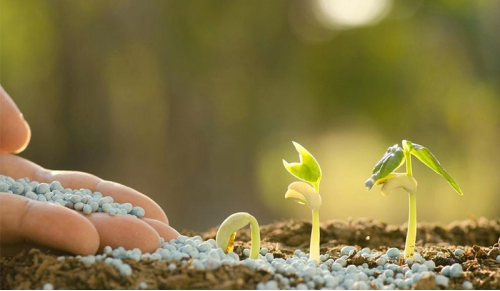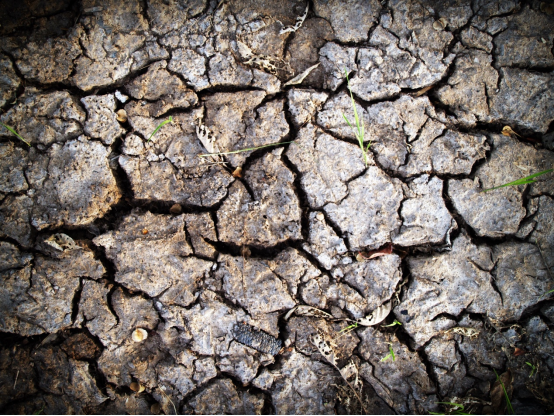Chemical fertilizers are being produced synthetically from inorganic materials, are substance providing nutrient elements for plants growth with physical or chemical methods.
The Nutrients of Chemical Fertilizers
Chemical fertilizers are rich in the three essential nutrients needed for plant growth. Types of fertilizer are in great varieties. Some examples of chemical fertilizers are ammonium sulphate, ammonium phosphate, ammonium nitrate, urea, ammonium chloride etc.
What’s NPK Fertilizers?
☆Nitrogen fertilizer
The roots of plants can absorb nitrogen fertilizer. Nitrogen is the main component of protein (including some enzymes and coenzyme), nucleic acid and phospholipids. They are important parts of protoplasm, nucleus and biofilm, which has a special role in plant vital activities. Nitrogen is a component of chlorophyll, so it has a close relation with photosynthesis. The amount of nitrogen will directly affect cell division and growth. Therefore, the supply of nitrogen fertilizer is vitally needed. Urea, ammonium nitrate and ammonium sulfate are commonly used in agriculture.
☆Phosphatic fertilizer
Phosphorus can promote the development of roots, flowers, seeds and fruit. Phosphorus participates in a variety of metabolic processes. Phosphorus is rich in meristems, which have the most productive life activities. Therefore, application of P fertilizer has a good effect on the tiller, branch and root growth. Phosphorus promotes the conversion and transportation of carbohydrates, enabling the growth of the seeds, roots and tubers. It can significantly increase the yield of crops.
☆Potassic fertilizer
Potassic fertilizer is used in acceleration of stem growth, movement of water and promotion of flowering and fruiting. Potassium(K) is in the form of ion in plants, which concentrates on the most productive parts in the life of plant, such as the growing point, cambium and leaves, etc. Potassium promotes synthesis of protein, facilitates sugar transportation and ensures cells water absorption.
Benefits from chemical fertilizer
Chemical fertilizers helping plants grow
They contain one or more of the essential growth nutrients such as nitrogen, phosphorus, and potassium and various others. Once added to the soil, these nutrients fulfill the required demands of the plants and provide them the nutrients they naturally lacked or helps them retain the lost nutrients. Chemical fertilizers provide specific formulations of NPK in order to treat nutrient-deficient soils and plants.
Chemical fertilizers being cheaper than organic fertilizers
Chemical fertilizers tend to cost much less than organic fertilizers. On the one hand, seeing from the organic fertilizers manufacturing process. It is not hard to figure out the reasons why organic fertilizers are costly: the need to harvest organic material to use in the fertilizers, and the higher costs of being certified organic by government regulatory agencies.
On the other hand, chemical fertilizers turning out to be cheaper is because they pack more nutrients per pound of weight, while more organic fertilizers are needed for the same level of nutrients. One needs several pounds of organic fertilizer to provide the same soil nutrient levels that a single pound of chemical fertilizer provides. Those 2 reasons directly influence the use of chemical fertilizer and organic fertilizer. Some reports suggest the US Fertilizer market to be around $40 Billion of which organic fertilizers occupy only about $60 Million. The rest of it is the share of the various artificial fertilizers.
Providing immediate nourishment
The providing of immediate nourishment and lower purchasing costs greatly popularized inorganic fertilizers. Chemical fertilizers have become a staple in many farms, yards and gardens, and can be a key component of a healthy lawn care routine. However, doesn’t chemical fertilizer do no harm to soil and plants? Aren’t there any things needing to be noticed in the application of chemical fertilizers? The answer absolutely is NO!
Environmental Effects of Using Synthetic Fertilizers
Pollution to underground water source
Some of the synthetic compounds used to manufacture chemical fertilizers can have negative environmental effects when allowed to run off into water sources. Nitrogen that flows into surface water by farmland accounts for 51% of human activities. Ammonia nitrogen and nitrate are main pollutant in rivers and lakes, which leads to eutrophication and ground water pollution.
Destroying soil structure
●With long-term and large-scale use of chemical fertilizer, some environment issues will appear, such as soil acidification and crust. Because of using quantities of nitrogen fertilizer, instead of organic fertilizer, some tropical farmland is in severe soil crust, leading to ultimately lost the farming value. Effects of chemical fertilizers on soil are great and irreversible.
●Long-term use of chemical fertilizer can change the soil pH, upset beneficial microbial ecosystems, increase pests, and even contribute to the release of greenhouse gases.
●Many types of inorganic fertilizers are highly acidic, which in turn often increases the acidity of the soil, thereby reducing beneficial organisms and stunting plant growth. By upsetting this natural ecosystem, long-term use of synthetic fertilizer can eventually lead to a chemical imbalance in the recipient plants.
●Repeated applications may result in a toxic buildup of chemicals such as arsenic, cadmium, and uranium in the soil. These toxic chemicals can eventually make their way into your fruits and vegetables.
Having some reasonable knowledge of application of fertilizer can avoid unnecessary waste in the purchase of fertilizers and increase the yield of crops.
Choosing fertilizer according to soil characteristics
Before buying fertilizer, it is necessary to be well aware of soil pH. If the soil is wour, we can increase the usage of organic fertilizer, keep the control of nitrogenous and remain the amount of phosphatic fertilizer.
Co-using with organic fertilizer
It is of the essence for agriculture to use organic fertilizer and chemical fertilizer. Studies have shown that it is beneficial to soil organic matter turnover. With the use of organic manure and chemical fertilizers, soil organic matter is updating and exchange capacity of soil cation is improved, which helps to improve soil enzyme activity and increase crop nutrient absorption. It helps improve crop quality, enhance component content of protein, amino acids and other nutrients, and reduce nitrate and nitrite content in vegetables and fruits.
Choosing the right method of fertilization
In fertilization techniques and environmental conditions, the nitrate content of vegetables and crops and the types of nitrogen in soil are closely related. the higher concentration of nitrogen in the soil, the higher nitrate content in vegetables, especially in the latter period. Therefore, the application of chemical fertilizer should be early and not too much. Nitrogenous fertilizer is not suitable for spreading, otherwise resulting in volatilization or loss. Due to low mobility, phosphatic fertilizer should be in deep placement.
Chemical fertilizers do great favor in plants grow, while also have great influence on environment.
There is a risk of groundwater contamination and the environmental issues that chemical fertilizer brings. Be sure you understand what’s really happening to the earth under your feet, so that you’ll make your choice consciously.
The principle of using chemical fertilizer
Reduce the amount of chemical fertilizer apply and combine with organic fertilizer. Make nutritional diagnosis according to local soil conditions and apply fertilizer according to actual needs.
Post time: Jun-18-2021




